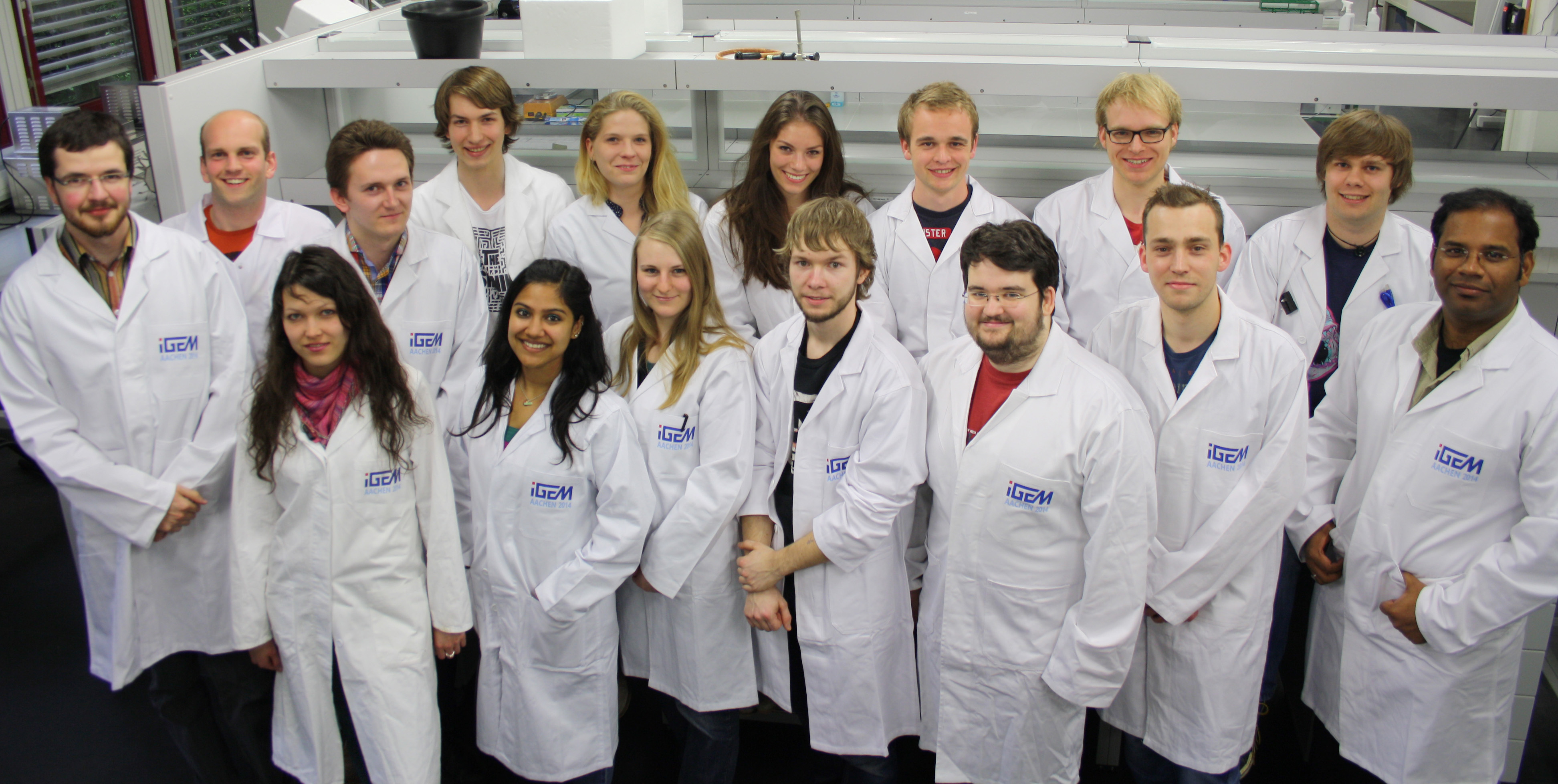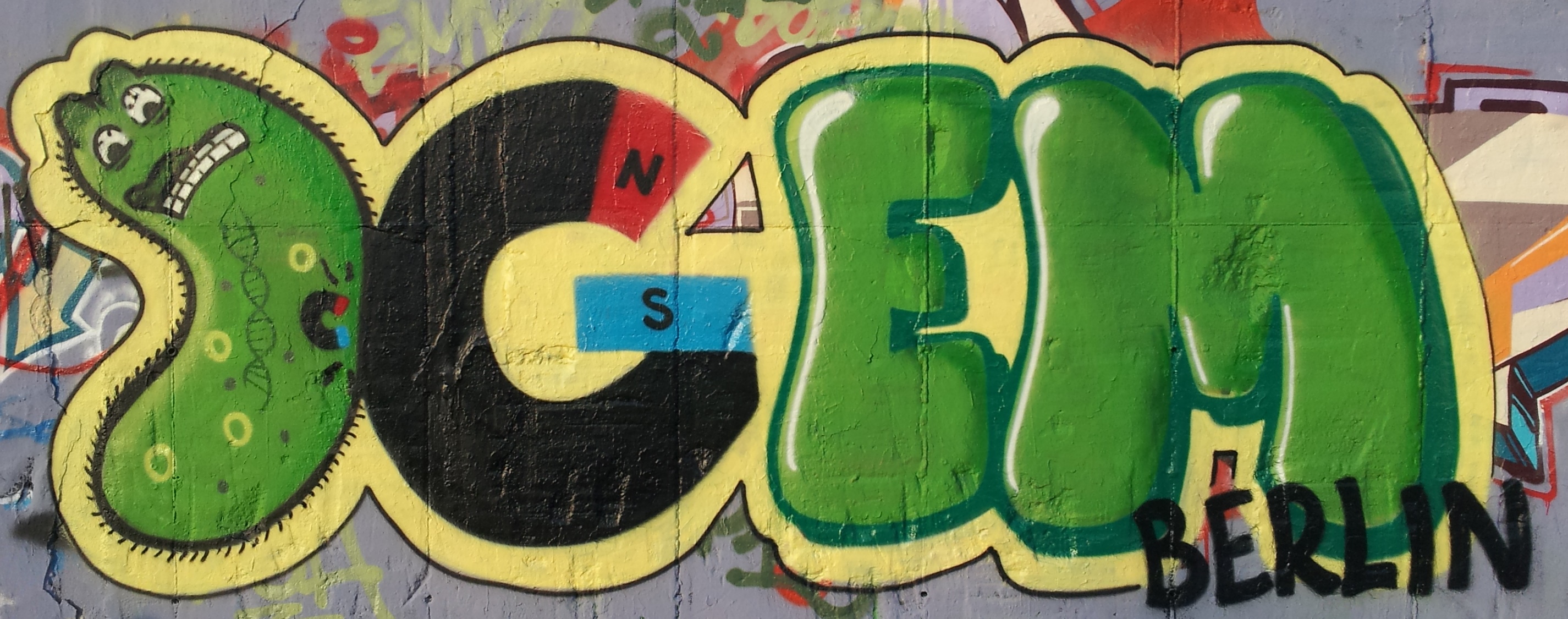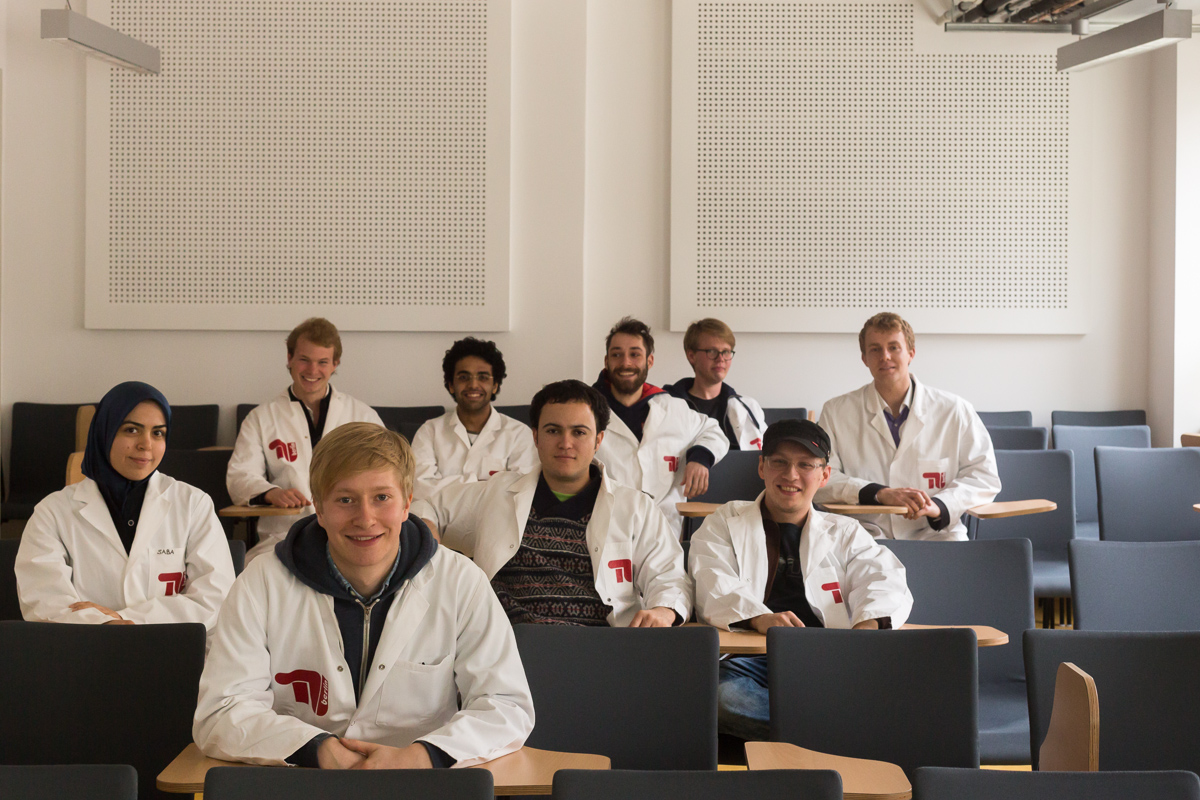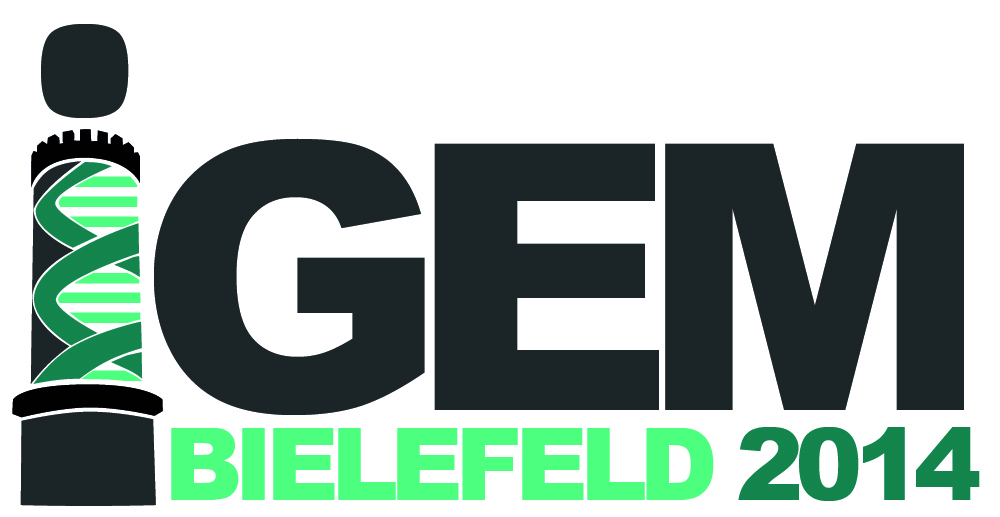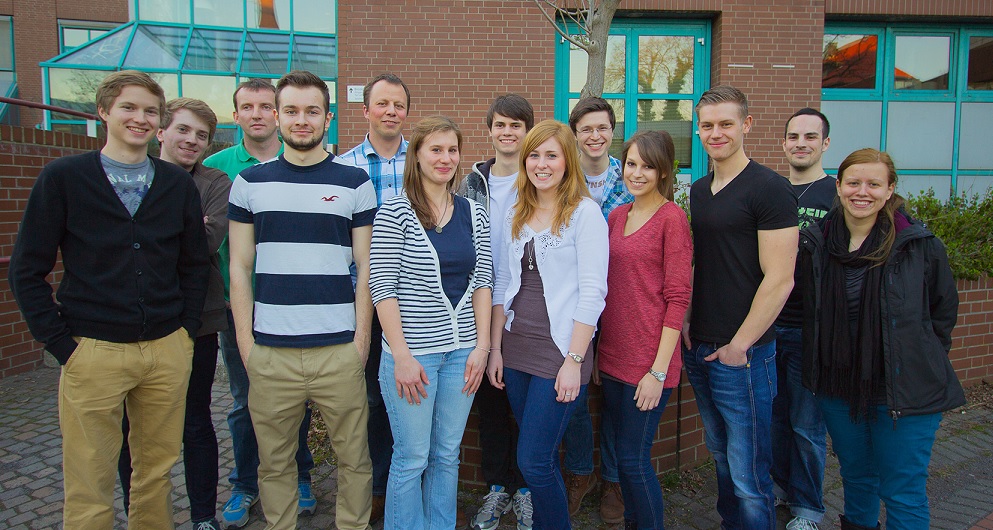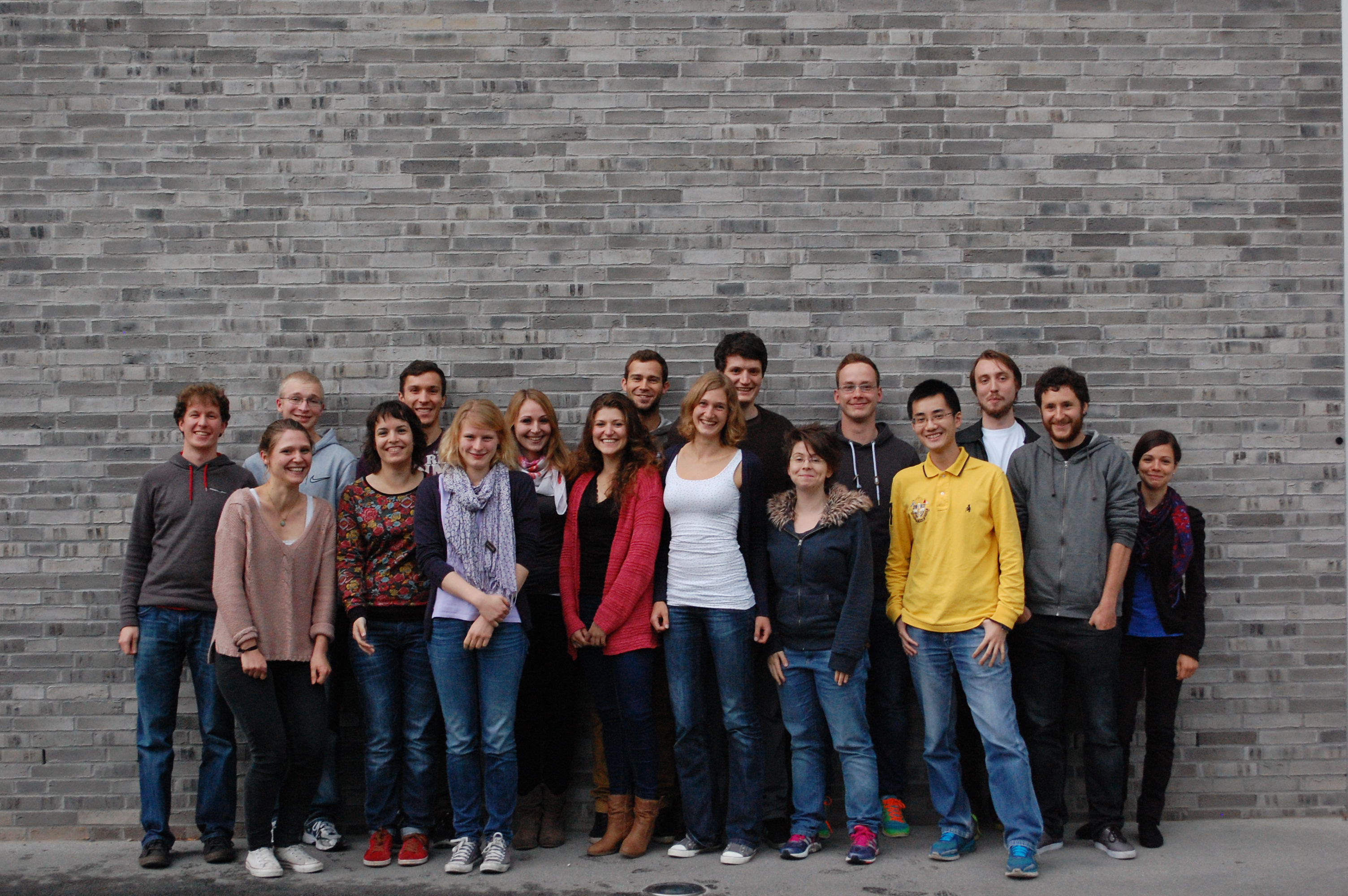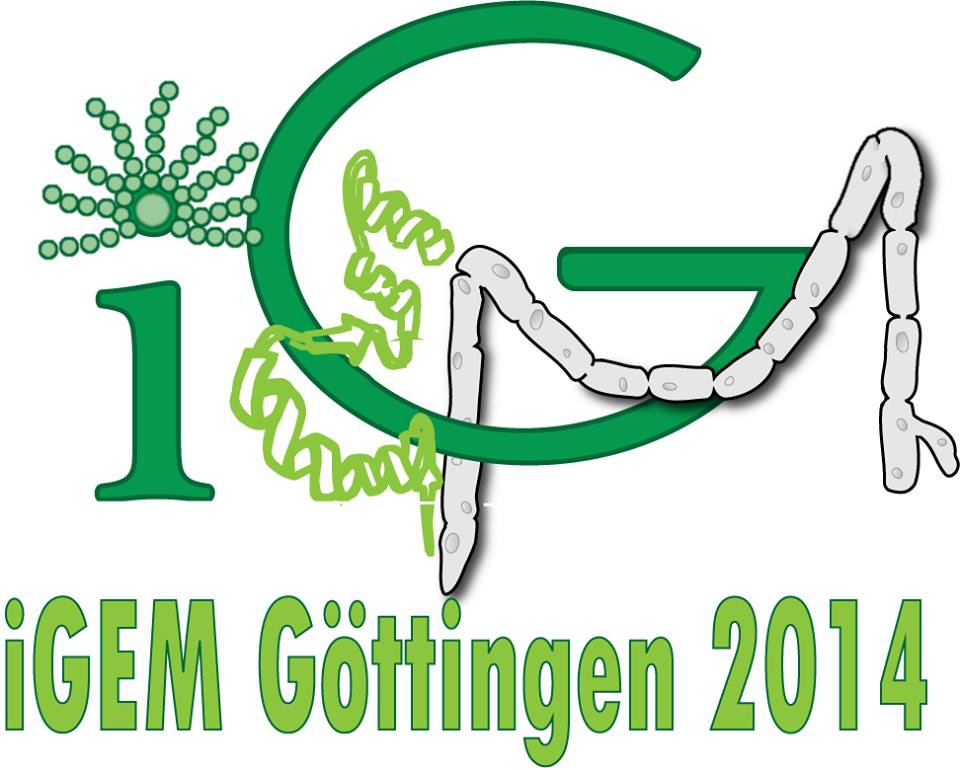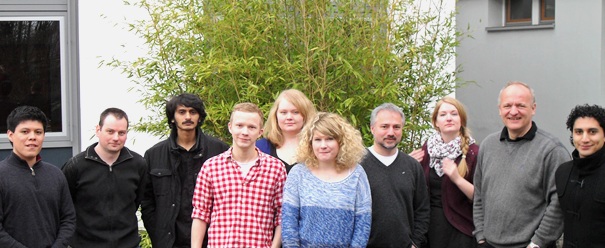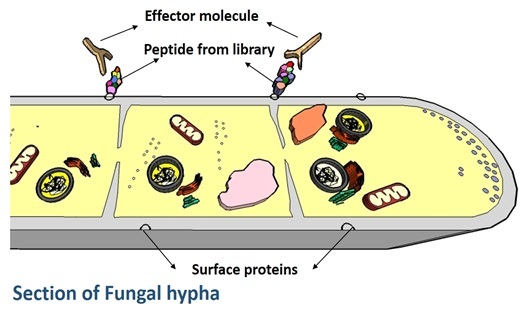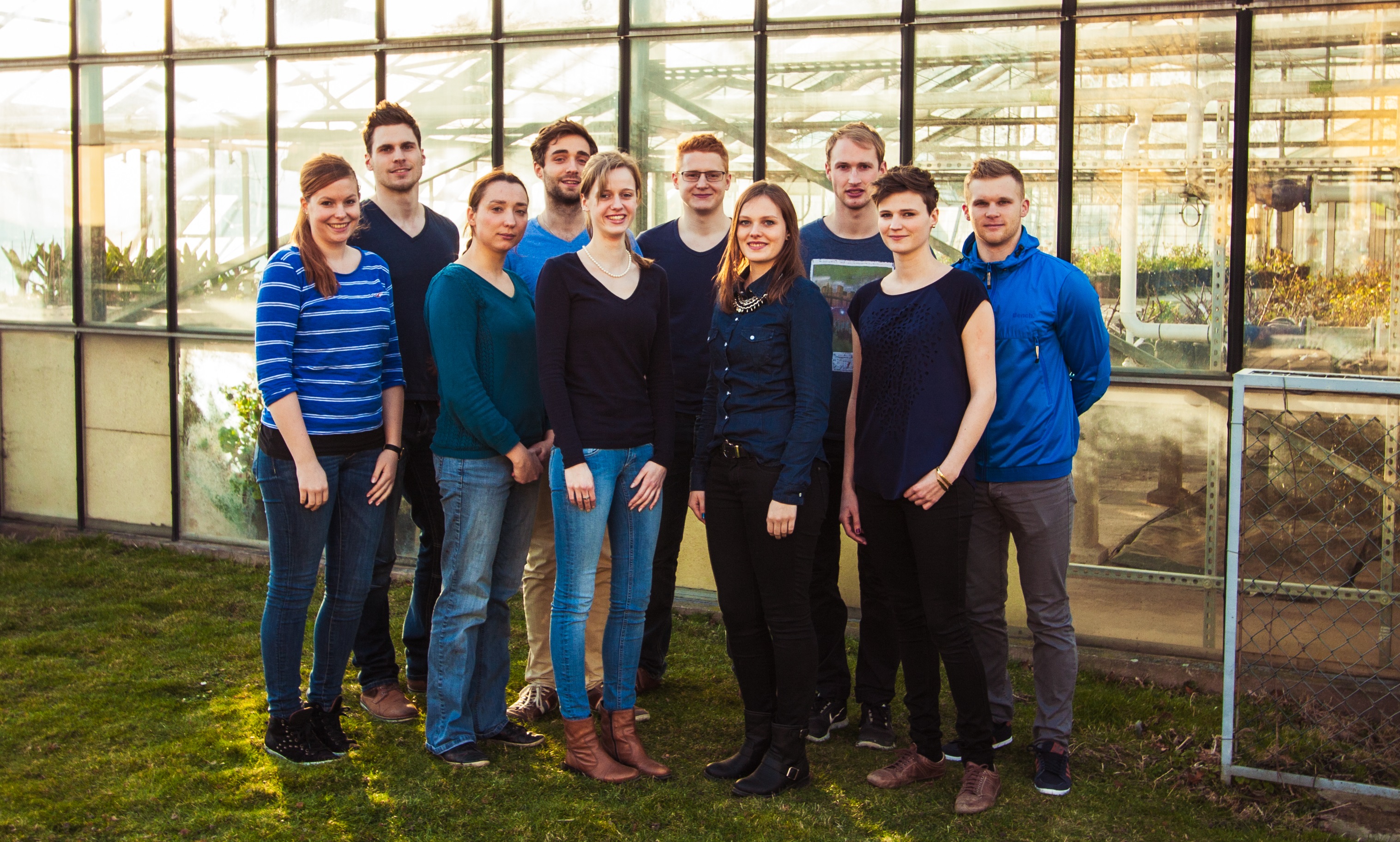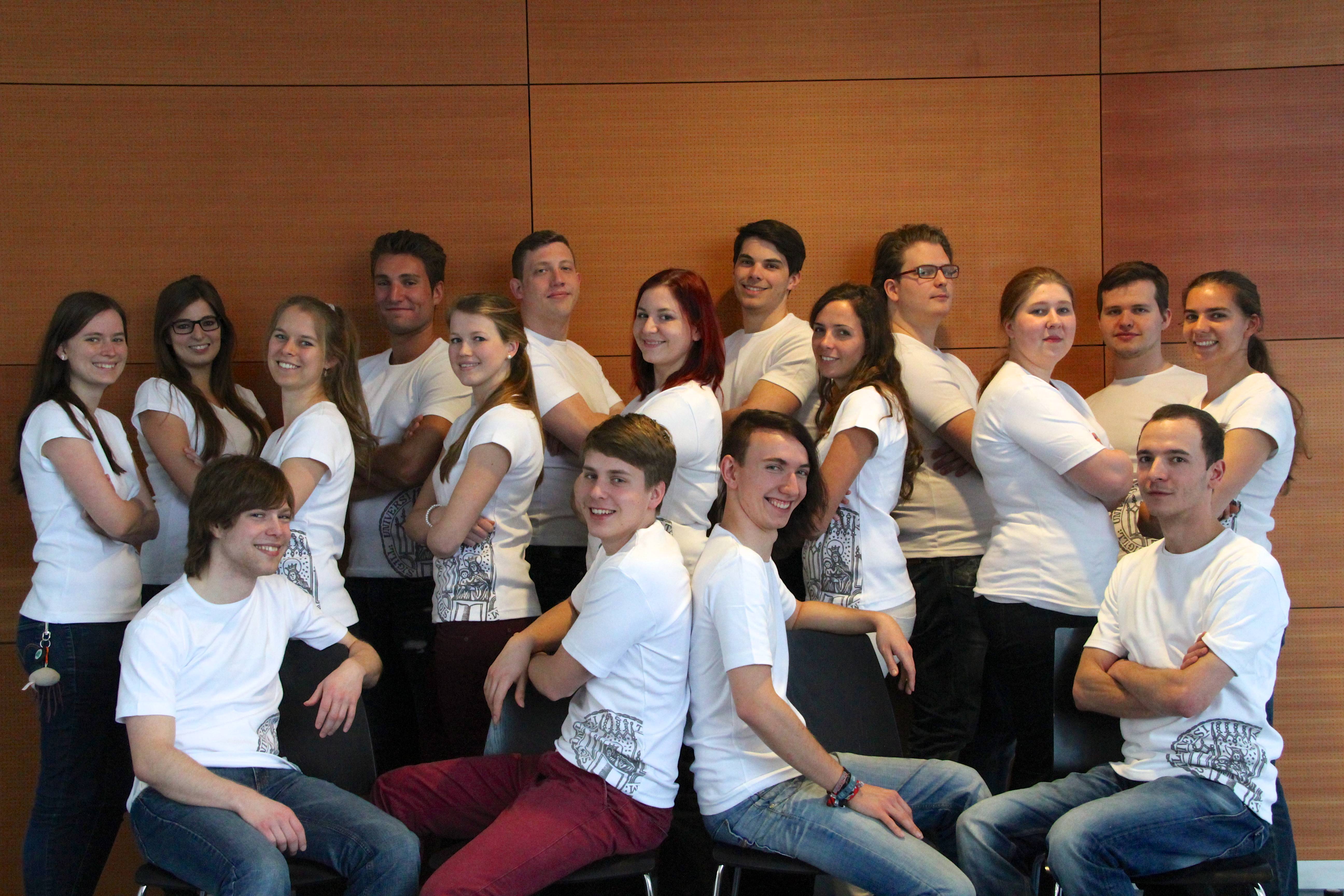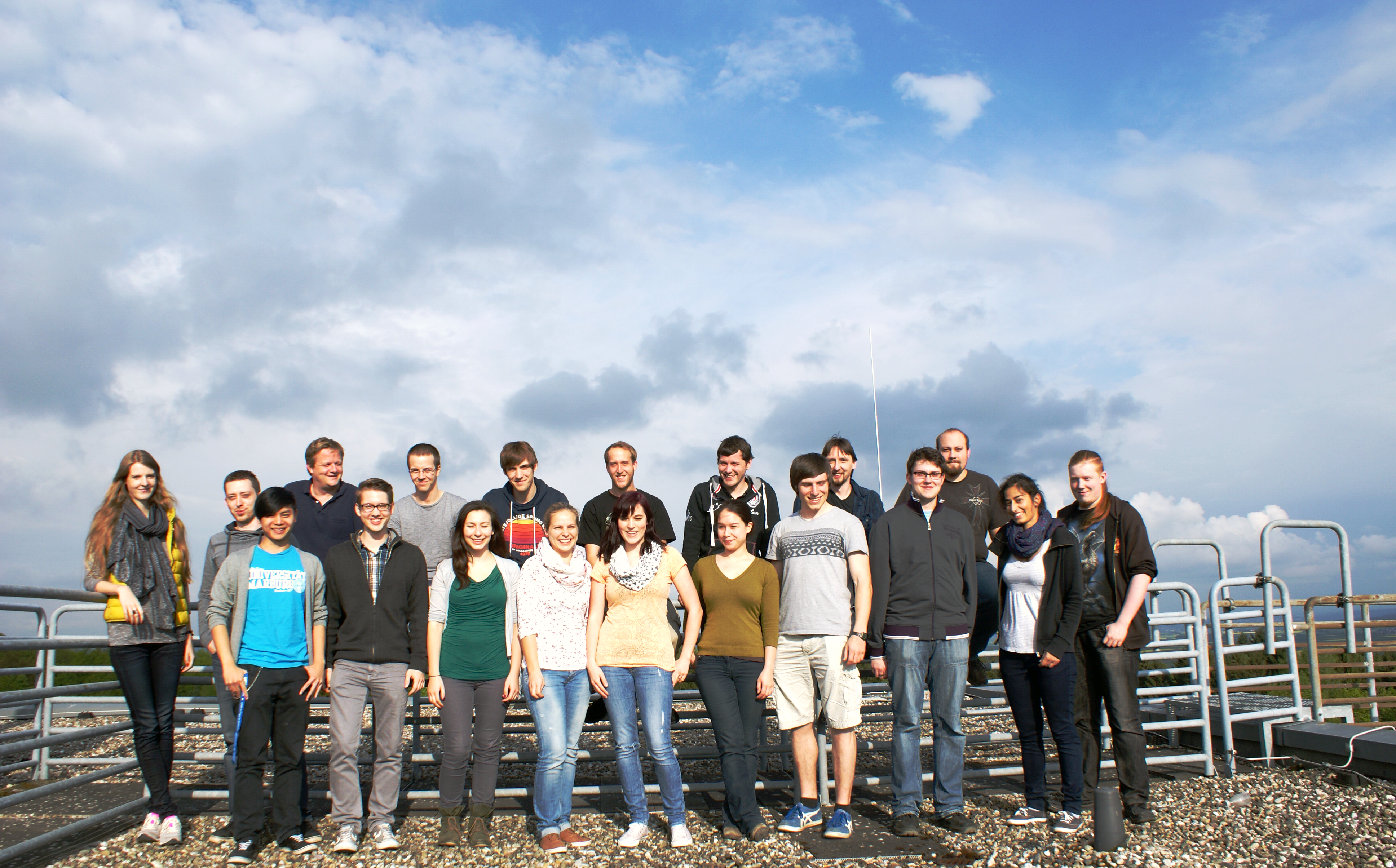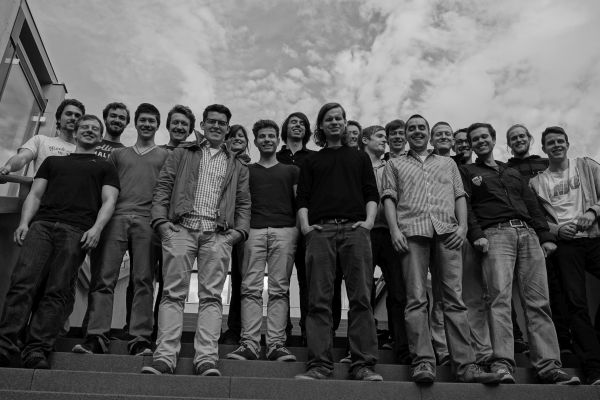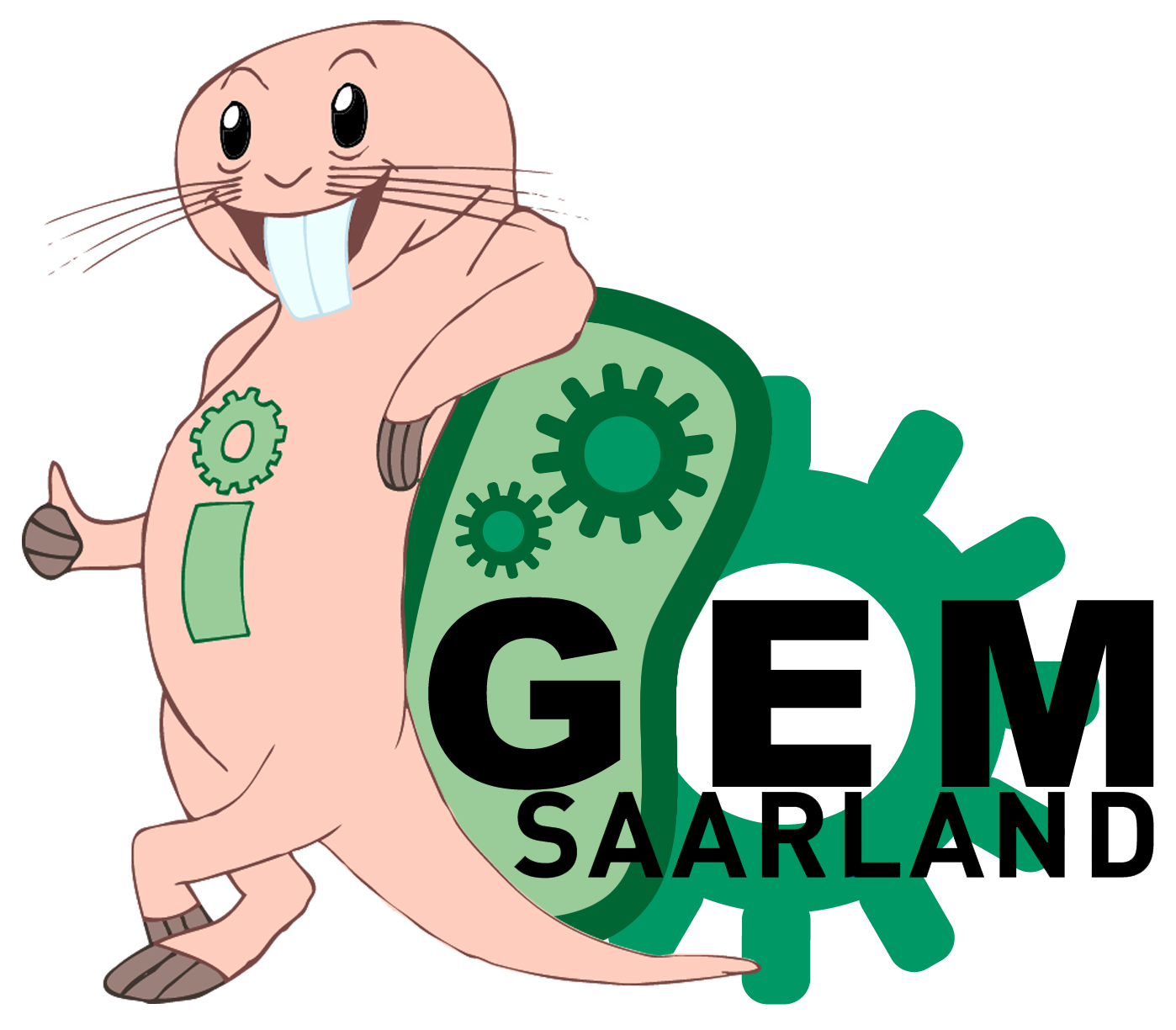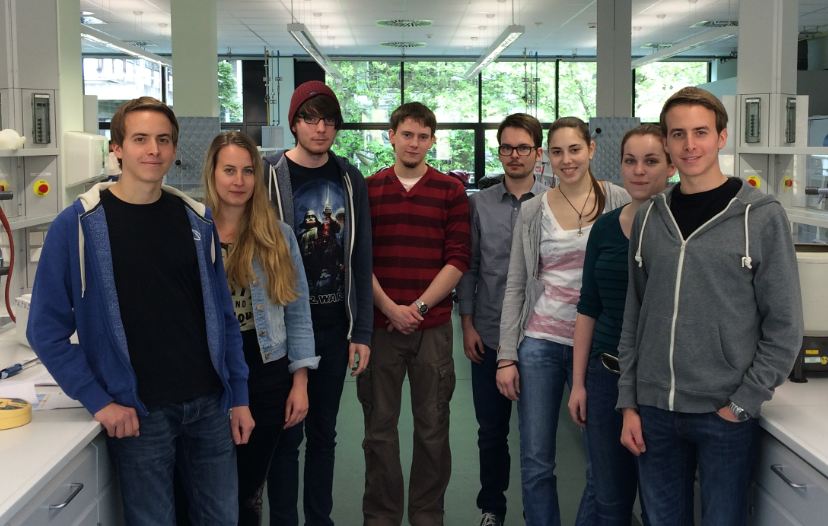Meetups:May LMU-Munich/Teams
From 2014.igem.org
m |
Hoerldavid (Talk | contribs) |
||
| (8 intermediate revisions not shown) | |||
| Line 16: | Line 16: | ||
var y = $(window).scrollTop(); //your current y position on the page | var y = $(window).scrollTop(); //your current y position on the page | ||
console.log(y); | console.log(y); | ||
| - | $(window).scrollTop(y- | + | $(window).scrollTop(y-220); |
| Line 28: | Line 28: | ||
//console.log(y); | //console.log(y); | ||
$(window).scrollTop(yold); | $(window).scrollTop(yold); | ||
| - | //$(window).scrollTop(ynew- | + | //$(window).scrollTop(ynew-220); |
| - | $('html, body').animate({scrollTop: ynew- | + | $('html, body').animate({scrollTop: ynew-220}, '800'); |
}, 1); | }, 1); | ||
| Line 49: | Line 49: | ||
'''Cellock Holmes – a case of identity''' | '''Cellock Holmes – a case of identity''' | ||
| - | [[File:MeetUpMunic-Aachen.jpg|left|link=http://igem.rwth-aachen.de/|400px|Aachen]] | + | [[File:MeetUpMunic-Aachen.jpg|left|link=http://igem.rwth-aachen.de/|400px|Click here to learn more about Aachen]] |
Pathogens on solid surfaces in places where good hygiene is crucial pose a serious threat, since – even after cleaning – these can still be present in dangerous amounts. This is demonstrated by the high number of 3.2 million patients each year that have to be treated due to in the health sector acquired infections. And 37000 of those infections end deadly. The EU estimates that at least 20-30% of those cases would be preventable with an intensive hygiene program. However, for a more effective control these respective pathogens have to be identified. | Pathogens on solid surfaces in places where good hygiene is crucial pose a serious threat, since – even after cleaning – these can still be present in dangerous amounts. This is demonstrated by the high number of 3.2 million patients each year that have to be treated due to in the health sector acquired infections. And 37000 of those infections end deadly. The EU estimates that at least 20-30% of those cases would be preventable with an intensive hygiene program. However, for a more effective control these respective pathogens have to be identified. | ||
| Line 63: | Line 63: | ||
'''A remote control for E. coli''' | '''A remote control for E. coli''' | ||
| - | [[File:MeetUpMunic-Berlin.jpg|right|link=http:// | + | [[File:MeetUpMunic-Berlin.jpg|right|link=http://www.aaa.bbb/|400px|Berlin doesn't have a website yet]] |
| - | In October 2014, a team of Berlin students from a variety or backgrounds are participating for the first time | + | In October 2014, a team of Berlin students from a variety or backgrounds are participating for the first time in the international genetically engineered machines competition. For our project, the iGEM Berlin team has decided to make E. coli bacteria susceptible to magnetic fields. By knocking out the iron efflux transporter (FieF) and iron uptake suppressor (FUR), we want to increase the total iron level of the cytosol. By sequestering iron in a ferritin protein, iron crystals are formed and the cell is detoxified. In order to create ferromagnetic of super paramagnetic crystals, we will then use an intensive high trough put media optimization to discover the best conditions for the formation of magnetic nanoparticles in E. coli. |
Furthermore, we will work with other metal binding proteins like metallothioneins and phytochelatin synthetases in order to achieve nanoparticle synthesis in E. coli. Once we have discovered the best way to magnetize E. coli bacteria we will build and characterize a suitable BioBrick that can be used by any research lab or iGEM team in the world in order to remote control the movement of E. coli cells. | Furthermore, we will work with other metal binding proteins like metallothioneins and phytochelatin synthetases in order to achieve nanoparticle synthesis in E. coli. Once we have discovered the best way to magnetize E. coli bacteria we will build and characterize a suitable BioBrick that can be used by any research lab or iGEM team in the world in order to remote control the movement of E. coli cells. | ||
| Line 77: | Line 77: | ||
'''Electricity driven bioproduction from carbon dioxide''' | '''Electricity driven bioproduction from carbon dioxide''' | ||
| - | [[File:MeetUpMunic-Bielefeld.jpg|left|link=http://2014.igem-bielefeld.de/overview.php|400px|Bielefeld]] | + | [[File:MeetUpMunic-Bielefeld.jpg|left|link=http://2014.igem-bielefeld.de/overview.php|400px|Click here to learn more about Bielefeld]] |
The main focus of todays discussion about climate protection is on the (anthropogenically) increased concentration of the atmospheric greenhouse gas carbon dioxide (CO2). The reduction of the output as well as the fixation of already emitted gas is desired. Beside its role in global warming CO2 is the main source of carbon for various (photoautotrophic) organisms (e.g. plants). Furthermore there is a growing interest in regenerative energy, because of the decreasing availability of fossil fuels. Not only the missing infrastructure for transportation of electricity, but also the insufficient possibilities for storage cause several problems. | The main focus of todays discussion about climate protection is on the (anthropogenically) increased concentration of the atmospheric greenhouse gas carbon dioxide (CO2). The reduction of the output as well as the fixation of already emitted gas is desired. Beside its role in global warming CO2 is the main source of carbon for various (photoautotrophic) organisms (e.g. plants). Furthermore there is a growing interest in regenerative energy, because of the decreasing availability of fossil fuels. Not only the missing infrastructure for transportation of electricity, but also the insufficient possibilities for storage cause several problems. | ||
| Line 87: | Line 87: | ||
=== Braunschweig === | === Braunschweig === | ||
| - | [[File:MeetUpMunic-Braunschweig.jpg|right|link=http://en.igem-braunschweig.de|400px|Braunschweig]] | + | [[File:MeetUpMunic-Braunschweig.jpg|right|link=http://en.igem-braunschweig.de|400px|Click here to learn more about Braunschweig]] |
Presumably, few people would be willing to permanently do without dairy products and beef; there are, however, negative side effects going along with their consumption. Milk cows and cattle are ruminants and as such important factors in global warming: In their rumen, billions of microorganisms release greenhouse gases such as carbon dioxide and methane as they help digest the animal’s food. Even though this is a natural process industrial-scale farming and increasing demand intensify the situation. Therefore, finding ways to decrease the production of such gases damaging to the climate is essential. Considering the 25 times greater contribution to global warming compared to CO2, methane emission is a substantial point of action for future climate protection. | Presumably, few people would be willing to permanently do without dairy products and beef; there are, however, negative side effects going along with their consumption. Milk cows and cattle are ruminants and as such important factors in global warming: In their rumen, billions of microorganisms release greenhouse gases such as carbon dioxide and methane as they help digest the animal’s food. Even though this is a natural process industrial-scale farming and increasing demand intensify the situation. Therefore, finding ways to decrease the production of such gases damaging to the climate is essential. Considering the 25 times greater contribution to global warming compared to CO2, methane emission is a substantial point of action for future climate protection. | ||
| Line 97: | Line 97: | ||
=== Freiburg === | === Freiburg === | ||
| - | [[File:MeetUpMunic-Freiburg.jpg|left|link=http:// | + | [[File:MeetUpMunic-Freiburg.jpg|left|link=http://www.aaa.bbb/|400px|Freiburg doesn't have a website yet]] |
Viral vectors, such as adeno-associated viruses (AAV), find great interest as delivery tools for treatment in human gene therapy. AAVs are single stranded DNA viruses which belong to the parvovirus family and depend on a co-infection with a helper virus to replicate. They have proven useful because they mediate long-term gene expression without any human pathogenicity and only minimal immunogenicity. These vectors can be used to transfect cells with Cas9, a CRISPR-associated nuclease. CRISPR provides an acquired immune system in bacteria and degrades exogenous viral DNA with the help of Cas-Proteins and small RNAs. The additional transfection of guide RNA will enable Cas9 to find and cut correct DNA targets. The iGEM Team Freiburg 2014 has plans to combine these two methods in order to create a new tool using the the experience of already existing iGEM projects. | Viral vectors, such as adeno-associated viruses (AAV), find great interest as delivery tools for treatment in human gene therapy. AAVs are single stranded DNA viruses which belong to the parvovirus family and depend on a co-infection with a helper virus to replicate. They have proven useful because they mediate long-term gene expression without any human pathogenicity and only minimal immunogenicity. These vectors can be used to transfect cells with Cas9, a CRISPR-associated nuclease. CRISPR provides an acquired immune system in bacteria and degrades exogenous viral DNA with the help of Cas-Proteins and small RNAs. The additional transfection of guide RNA will enable Cas9 to find and cut correct DNA targets. The iGEM Team Freiburg 2014 has plans to combine these two methods in order to create a new tool using the the experience of already existing iGEM projects. | ||
| + | |||
| + | [[File:Logo-Goettingen.jpg|right|90px|Goettingen]] | ||
=== Goettingen === | === Goettingen === | ||
| + | '''Detecting pathogenic funghi''' | ||
| + | |||
| + | [[File:MeetUpMunic-Goettingen.jpg|right|link=http://www.aaa.bbb/|500px|Goettingen doesn't have a website yet]] | ||
| - | + | ''Aspergillus fumigatus'' is a human pathogenic fungus that cause severe aspergillosis in immunocompromised patients, leading to a mortality rate from 30% to 85%. Early diagnosis is critical to a favorable outcome, but is difficult to achieve with current methods. Until now no simple method for diagnosis of invasive fungal infections exits in general. We intend to develop a fast screening technique for different invasive fungi. The idea is to tag the invasive fungal cells with a special protein marker, that allows an easy detection of fungi (see figure 1). [[File:MeetUpMunic-Goettingen-Figure1.jpg|thumb|190px|'''Figure 1''' ''Binding of the peptide from the library to the surface proteins on the fungal hypha'']] | |
| + | Such a technique allows the fast and direct elimination of invasive fungi, without adverse effects and time-consuming diagnostic techniques. By modifying the protein marker with a proper signal molecule, we will be able to accomplish a fast and direct detection or elimination of invasive fungi. In order to achieve this objective, we have to identify interactions between specific surface proteins of fungi and different protein markers. In a second step, this protein marker can be attached to different signal molecules. We are confident that this leads to an effective detection method and allows defeating invasive fungal infections. | ||
| Line 114: | Line 120: | ||
'''Ironplant 4.0: Phytoremediaton of Heavy Metals''' | '''Ironplant 4.0: Phytoremediaton of Heavy Metals''' | ||
| - | [[File:MeetUpMunic-Hannover.jpg|left|link=http://www.igem-hannover.de/|400px|Hannover]] | + | [[File:MeetUpMunic-Hannover.jpg|left|link=http://www.igem-hannover.de/|400px|Click here to learn more about Hannover]] |
Either from industrial waste or in natural resources - heavy metals are a global and current issue. Weathering often loosens the chemical compounds of the heavy metals and sets them free in our ecosystem. Consumption of heavy metal-containing food or water has drastic consequences for humans. These elements accumulate in our tissue and can cause serious diseases ranging from a weakened immune system to critically damaged organs. In the iGEM competition numerous teams have already focused on heavy metals. In contrast to previous attempts of detection or quantification, the iGEM-Team Hannover is going to take the next step: We are developing a plant-based strategy to remove large quantities of heavy metals from water and even soil. Herein an engineered protein will be attached to the plant´s cell wall, presenting an easy and inexpensive method of binding different metals simultaneously. | Either from industrial waste or in natural resources - heavy metals are a global and current issue. Weathering often loosens the chemical compounds of the heavy metals and sets them free in our ecosystem. Consumption of heavy metal-containing food or water has drastic consequences for humans. These elements accumulate in our tissue and can cause serious diseases ranging from a weakened immune system to critically damaged organs. In the iGEM competition numerous teams have already focused on heavy metals. In contrast to previous attempts of detection or quantification, the iGEM-Team Hannover is going to take the next step: We are developing a plant-based strategy to remove large quantities of heavy metals from water and even soil. Herein an engineered protein will be attached to the plant´s cell wall, presenting an easy and inexpensive method of binding different metals simultaneously. | ||
| Line 122: | Line 128: | ||
=== LMU-Munich === | === LMU-Munich === | ||
| - | ''' | + | '''„BaKillus“: Engineering a microbe-hunting microbe''' |
| - | [[File:MeetUpMunic-Munich.jpg|right|link=https://2014.igem.org/Team:LMU-Munich|400px|LMU-Munich]] | + | [[File:MeetUpMunic-Munich.jpg|right|link=https://2014.igem.org/Team:LMU-Munich|400px|Click here to learn more about LMU-Munich]] |
| - | + | Ever increasing bacterial resistance to classical antibiotics remains a serious threat and urges the development of novel pathogen killing strategies. Exploiting bacterial communication mechanisms, like quorum sensing systems, seems to be a promising strategy for specifically killing pathogens and would allow targeting only those bacteria that use a specific autoinducer. Towards that goal, we want to introduce a genetic circuit into Bacillus subtilis to enable this bacterium to actively detect, swim towards, attach to, and finally kill Staphylcoccus aureus with peptide antibiotics. This strategy would involve a variety of different modules and possibilities to reprogram B. subtilis. To achieve the above mentioned properties, we initially would introduce the autoinducer-peptide (AIP) sensing two-component system AgrC/AgrA of S. aureus into B. subtillus, to create a S. aureus detecting strain. Subsequently, downstream processes, like bacitracin production and export, DNase I export to degrade biofilms, etc. would have to be introduced by using Agr-sensitive promoters to trigger the microbe killing mechanisms in response to an AIP gradient. | |
| - | + | Moreover, our project will also aim at expanding the “Bacillus BioBrick Box” of the 2012 iGEM-team to provide more high quality parts, including a Gram-positive quorum-sensing systems, to a research community that is still dominated by working with the Gram-negative model organism E. coli. | |
| - | To achieve the above mentioned properties we would introduce | + | |
| - | detecting strain. | + | |
| - | + | ||
| - | + | ||
| Line 141: | Line 143: | ||
'''Silver Surfer''' | '''Silver Surfer''' | ||
| - | [[File:MeetUpMunic-Marburg.png|left|link=http:// | + | [[File:MeetUpMunic-Marburg.png|left|link=http://www.aaa.bbb/|400px|Marburg doesn't have a website yet]] |
The bacterial flagellum is a complex nanomachine that serves as a propulsive organelle for many species. It consists of a basal body, a motor complex and a helical filament that rotates due to the proton-powered motor. The filament is built up from multiple copies of a protein called Flagellin, about 20.000 duplicates of the protein can assemble in a helical pattern. Analysis of crystal structures revealed that the Flagellin of S. ''typhimurium'' is composed of three different domains. Whereas two of these domains, i.e. The N- and C-terminus respectively, are highly conserved among different bacterial species, the third domain is variable and can be exchanged. This domain is also located to the outer surface and therefore constantly available. | The bacterial flagellum is a complex nanomachine that serves as a propulsive organelle for many species. It consists of a basal body, a motor complex and a helical filament that rotates due to the proton-powered motor. The filament is built up from multiple copies of a protein called Flagellin, about 20.000 duplicates of the protein can assemble in a helical pattern. Analysis of crystal structures revealed that the Flagellin of S. ''typhimurium'' is composed of three different domains. Whereas two of these domains, i.e. The N- and C-terminus respectively, are highly conserved among different bacterial species, the third domain is variable and can be exchanged. This domain is also located to the outer surface and therefore constantly available. | ||
| Line 152: | Line 154: | ||
'''Grätzel-coli BioEnergy''' | '''Grätzel-coli BioEnergy''' | ||
| - | [[File:MeetUpMunic-Darmstadt.jpg|right | + | [[File:MeetUpMunic-Darmstadt.jpg|right|400px|Click here to upload Picture]] |
Our goal is to construct a cheap, low-energy consuming, environment-friendly and sustainable alternative to traditional solar cells by integrating a biological production platform into an electronic solar cell. | Our goal is to construct a cheap, low-energy consuming, environment-friendly and sustainable alternative to traditional solar cells by integrating a biological production platform into an electronic solar cell. | ||
| Line 165: | Line 167: | ||
'''Project Rufus - the Force of the Naked Mole Rat''' | '''Project Rufus - the Force of the Naked Mole Rat''' | ||
| - | [[File:MeetUpMunic-Saarland.jpg|left|link=http:// | + | [[File:MeetUpMunic-Saarland.jpg|left|link=http://www.aaa.bbb/|400px|Saarland doesn't have a website yet]] |
The iGEM- Team Saarland embraces human- and molecular biology and biophysics. We are 10 bachelor-/master students trained in handling biotechnological questions such as the planned identification, purification, biological characterization and technological production of bacteria- born substances. Our aim is to employ a simple soil bacterium as medium for the first ever production of a special hyaluronic acid that was recently identified in the naked mole- rat (Heterocephalus glaber). Fibroblasts of the naked mole- rat were found to secrete a high- molecular- mass hyaluronic acid that is 5 times larger than the human or mouse hyaluronic acid. This phenomenon is supposed to cause the cancer resistance in the species of Heterocephalus glaber. Within the project run- time the special hyaluronic acid will be produced, purified and tested in its inhibitory effects on carcinogenesis in selected human cancer cell lines. These biological tests will be run on physiological and molecular level in cell culture. | The iGEM- Team Saarland embraces human- and molecular biology and biophysics. We are 10 bachelor-/master students trained in handling biotechnological questions such as the planned identification, purification, biological characterization and technological production of bacteria- born substances. Our aim is to employ a simple soil bacterium as medium for the first ever production of a special hyaluronic acid that was recently identified in the naked mole- rat (Heterocephalus glaber). Fibroblasts of the naked mole- rat were found to secrete a high- molecular- mass hyaluronic acid that is 5 times larger than the human or mouse hyaluronic acid. This phenomenon is supposed to cause the cancer resistance in the species of Heterocephalus glaber. Within the project run- time the special hyaluronic acid will be produced, purified and tested in its inhibitory effects on carcinogenesis in selected human cancer cell lines. These biological tests will be run on physiological and molecular level in cell culture. | ||
Latest revision as of 17:04, 19 May 2014
Contents |
Participating Teams
Members from 11 German iGEM teams will attend our meetup (Aachen, Berlin, Bielefeld-CeBiTec, Braunschweig, Goettingen, Hannover, LMU-Munich, Marburg, TU_Darmstadt, Saarland). We will showcase all projects here once the information becomes available.
Aachen
Cellock Holmes – a case of identity
Pathogens on solid surfaces in places where good hygiene is crucial pose a serious threat, since – even after cleaning – these can still be present in dangerous amounts. This is demonstrated by the high number of 3.2 million patients each year that have to be treated due to in the health sector acquired infections. And 37000 of those infections end deadly. The EU estimates that at least 20-30% of those cases would be preventable with an intensive hygiene program. However, for a more effective control these respective pathogens have to be identified. We are developing a system that makes this possible. We are constructing a device with which pathogens can be detected easily, efficiently, effectively and less expensively by utilising genetically modified cells. We focus on a fast response time coupled with an automated analysis. Our project is not only applicable to the detection of pathogens but we are looking to develop it further into a platform for a general 2D detection of nearly any cell or substance.
Berlin
A remote control for E. coli
In October 2014, a team of Berlin students from a variety or backgrounds are participating for the first time in the international genetically engineered machines competition. For our project, the iGEM Berlin team has decided to make E. coli bacteria susceptible to magnetic fields. By knocking out the iron efflux transporter (FieF) and iron uptake suppressor (FUR), we want to increase the total iron level of the cytosol. By sequestering iron in a ferritin protein, iron crystals are formed and the cell is detoxified. In order to create ferromagnetic of super paramagnetic crystals, we will then use an intensive high trough put media optimization to discover the best conditions for the formation of magnetic nanoparticles in E. coli.
Furthermore, we will work with other metal binding proteins like metallothioneins and phytochelatin synthetases in order to achieve nanoparticle synthesis in E. coli. Once we have discovered the best way to magnetize E. coli bacteria we will build and characterize a suitable BioBrick that can be used by any research lab or iGEM team in the world in order to remote control the movement of E. coli cells.
Bielefeld-CeBiTec
Electricity driven bioproduction from carbon dioxide
The main focus of todays discussion about climate protection is on the (anthropogenically) increased concentration of the atmospheric greenhouse gas carbon dioxide (CO2). The reduction of the output as well as the fixation of already emitted gas is desired. Beside its role in global warming CO2 is the main source of carbon for various (photoautotrophic) organisms (e.g. plants). Furthermore there is a growing interest in regenerative energy, because of the decreasing availability of fossil fuels. Not only the missing infrastructure for transportation of electricity, but also the insufficient possibilities for storage cause several problems. With our project we aim to address the problem of energy storage as well as the increasing atmospheric concentration of carbon dioxide. Excess electricity will be used to fix atmospheric carbon dioxide in bacteria. Then this carbon is used to produce different commercially interesting products. As a proof of concept we decided to implement a production system using Escherichia coli. Advantages of this concept will be the use of carbon dioxide from the atmosphere on the one hand and the production of bulk chemicals under usage of cheap and available electricity on the other hand.
Braunschweig
Presumably, few people would be willing to permanently do without dairy products and beef; there are, however, negative side effects going along with their consumption. Milk cows and cattle are ruminants and as such important factors in global warming: In their rumen, billions of microorganisms release greenhouse gases such as carbon dioxide and methane as they help digest the animal’s food. Even though this is a natural process industrial-scale farming and increasing demand intensify the situation. Therefore, finding ways to decrease the production of such gases damaging to the climate is essential. Considering the 25 times greater contribution to global warming compared to CO2, methane emission is a substantial point of action for future climate protection.
We are going to engineer a bacterium in a way that it is able to render methane harmless just as it originates in the cow’s rumen. The bacterium shall be equipped with an enzyme, the methane monooxygenase (MMO) turning methane instantly into a natural intermediate of the cellular metabolism so that no methane is released into the atmosphere. In ordner to realize this the 6 subunits of the MMO as well as potentially required proteins will be build into the DNA of the new E.coli-bacterium.
Freiburg
Viral vectors, such as adeno-associated viruses (AAV), find great interest as delivery tools for treatment in human gene therapy. AAVs are single stranded DNA viruses which belong to the parvovirus family and depend on a co-infection with a helper virus to replicate. They have proven useful because they mediate long-term gene expression without any human pathogenicity and only minimal immunogenicity. These vectors can be used to transfect cells with Cas9, a CRISPR-associated nuclease. CRISPR provides an acquired immune system in bacteria and degrades exogenous viral DNA with the help of Cas-Proteins and small RNAs. The additional transfection of guide RNA will enable Cas9 to find and cut correct DNA targets. The iGEM Team Freiburg 2014 has plans to combine these two methods in order to create a new tool using the the experience of already existing iGEM projects.
Goettingen
Detecting pathogenic funghi
Aspergillus fumigatus is a human pathogenic fungus that cause severe aspergillosis in immunocompromised patients, leading to a mortality rate from 30% to 85%. Early diagnosis is critical to a favorable outcome, but is difficult to achieve with current methods. Until now no simple method for diagnosis of invasive fungal infections exits in general. We intend to develop a fast screening technique for different invasive fungi. The idea is to tag the invasive fungal cells with a special protein marker, that allows an easy detection of fungi (see figure 1).Such a technique allows the fast and direct elimination of invasive fungi, without adverse effects and time-consuming diagnostic techniques. By modifying the protein marker with a proper signal molecule, we will be able to accomplish a fast and direct detection or elimination of invasive fungi. In order to achieve this objective, we have to identify interactions between specific surface proteins of fungi and different protein markers. In a second step, this protein marker can be attached to different signal molecules. We are confident that this leads to an effective detection method and allows defeating invasive fungal infections.
Hannover
Ironplant 4.0: Phytoremediaton of Heavy Metals
Either from industrial waste or in natural resources - heavy metals are a global and current issue. Weathering often loosens the chemical compounds of the heavy metals and sets them free in our ecosystem. Consumption of heavy metal-containing food or water has drastic consequences for humans. These elements accumulate in our tissue and can cause serious diseases ranging from a weakened immune system to critically damaged organs. In the iGEM competition numerous teams have already focused on heavy metals. In contrast to previous attempts of detection or quantification, the iGEM-Team Hannover is going to take the next step: We are developing a plant-based strategy to remove large quantities of heavy metals from water and even soil. Herein an engineered protein will be attached to the plant´s cell wall, presenting an easy and inexpensive method of binding different metals simultaneously.
LMU-Munich
„BaKillus“: Engineering a microbe-hunting microbe
Ever increasing bacterial resistance to classical antibiotics remains a serious threat and urges the development of novel pathogen killing strategies. Exploiting bacterial communication mechanisms, like quorum sensing systems, seems to be a promising strategy for specifically killing pathogens and would allow targeting only those bacteria that use a specific autoinducer. Towards that goal, we want to introduce a genetic circuit into Bacillus subtilis to enable this bacterium to actively detect, swim towards, attach to, and finally kill Staphylcoccus aureus with peptide antibiotics. This strategy would involve a variety of different modules and possibilities to reprogram B. subtilis. To achieve the above mentioned properties, we initially would introduce the autoinducer-peptide (AIP) sensing two-component system AgrC/AgrA of S. aureus into B. subtillus, to create a S. aureus detecting strain. Subsequently, downstream processes, like bacitracin production and export, DNase I export to degrade biofilms, etc. would have to be introduced by using Agr-sensitive promoters to trigger the microbe killing mechanisms in response to an AIP gradient. Moreover, our project will also aim at expanding the “Bacillus BioBrick Box” of the 2012 iGEM-team to provide more high quality parts, including a Gram-positive quorum-sensing systems, to a research community that is still dominated by working with the Gram-negative model organism E. coli.
Marburg
Silver Surfer
The bacterial flagellum is a complex nanomachine that serves as a propulsive organelle for many species. It consists of a basal body, a motor complex and a helical filament that rotates due to the proton-powered motor. The filament is built up from multiple copies of a protein called Flagellin, about 20.000 duplicates of the protein can assemble in a helical pattern. Analysis of crystal structures revealed that the Flagellin of S. typhimurium is composed of three different domains. Whereas two of these domains, i.e. The N- and C-terminus respectively, are highly conserved among different bacterial species, the third domain is variable and can be exchanged. This domain is also located to the outer surface and therefore constantly available. Due to the high number of Flagellin copies and the location of the variable loop the flagellum is an interesting structure to build a protein scaffold. We aim to insert different proteins in this unfunctional loop of the flagellum because protein scaffolds like this often provide practical advantages including elevated stability and high production yield in microbial expression systems.
TU_Darmstadt
Grätzel-coli BioEnergy
Our goal is to construct a cheap, low-energy consuming, environment-friendly and sustainable alternative to traditional solar cells by integrating a biological production platform into an electronic solar cell. The TU Darmstadt iGEM project 2014 has two aspects. Our biological device, engineered Escherichia coli (E. coli) bacteria, utilizes the phenylpropanoid pathway from plants to produce anthocyanins, a water-soluble class of plant pigments. Our approach involves heavy metabolic engineering in order to achieve high yields. Anthocyanin production has three major problems: Firstly the growth of plants consumes agricultural land which could be used for food production. Secondly, the extraction process includes toxic and environmentally hazardous chemicals like methanol, acetone and sulfur dioxide. Lastly, the high energy costs of the extraction and purification process make it economically inefficient. Anthocyanins and their derivatives are used for coloring food and they are also considered to have antioxidant properties and therapeutic significance. Nevertheless we are interested in another feature of anthocyanins. Dye-sensitized solar cells (Grätzel cells) are photovoltaic cells which exploit organic dyes like anthocyanins instead of rare earth elements (REE). Furthermore they can be produced on flexible substrates, giving them the ability to be used in roll-to-roll printing processes.
Saarland
Project Rufus - the Force of the Naked Mole Rat
The iGEM- Team Saarland embraces human- and molecular biology and biophysics. We are 10 bachelor-/master students trained in handling biotechnological questions such as the planned identification, purification, biological characterization and technological production of bacteria- born substances. Our aim is to employ a simple soil bacterium as medium for the first ever production of a special hyaluronic acid that was recently identified in the naked mole- rat (Heterocephalus glaber). Fibroblasts of the naked mole- rat were found to secrete a high- molecular- mass hyaluronic acid that is 5 times larger than the human or mouse hyaluronic acid. This phenomenon is supposed to cause the cancer resistance in the species of Heterocephalus glaber. Within the project run- time the special hyaluronic acid will be produced, purified and tested in its inhibitory effects on carcinogenesis in selected human cancer cell lines. These biological tests will be run on physiological and molecular level in cell culture.
 "
"

